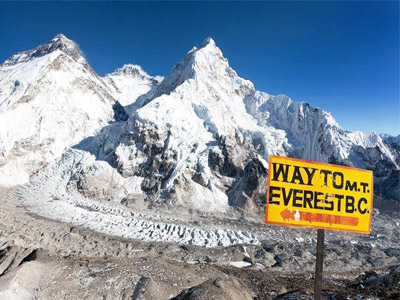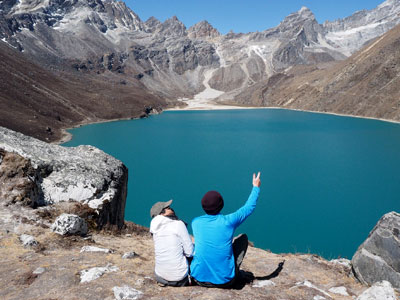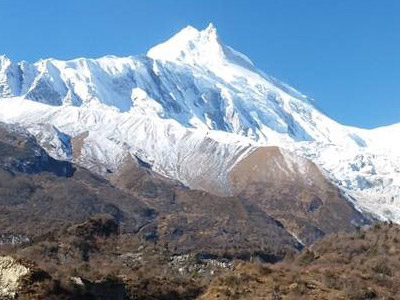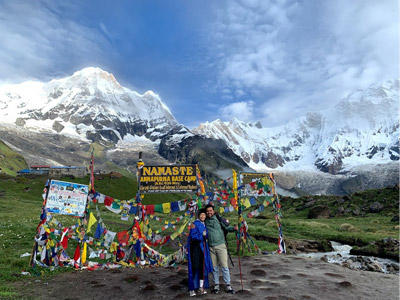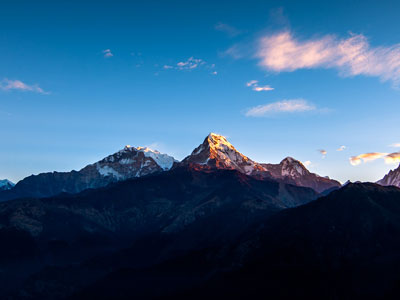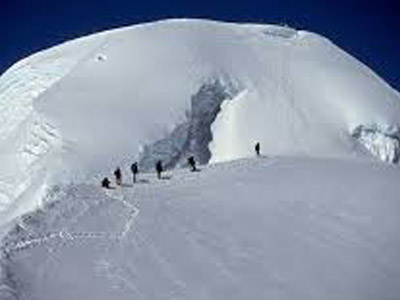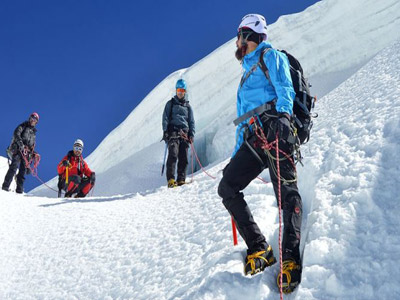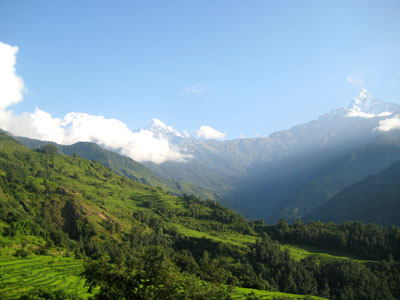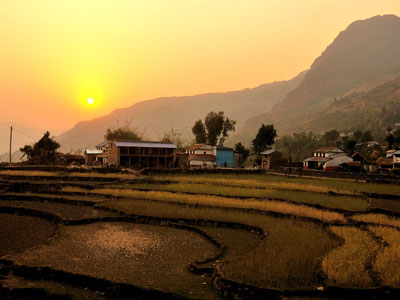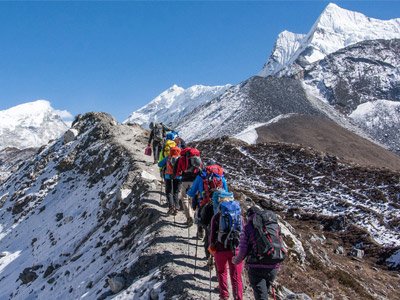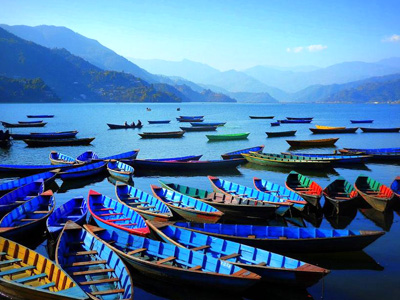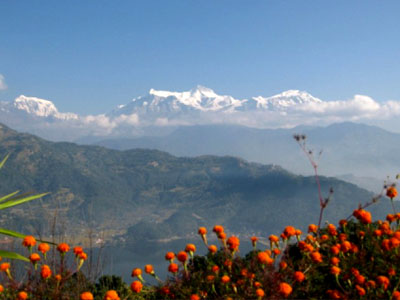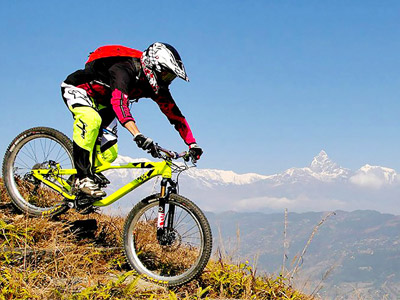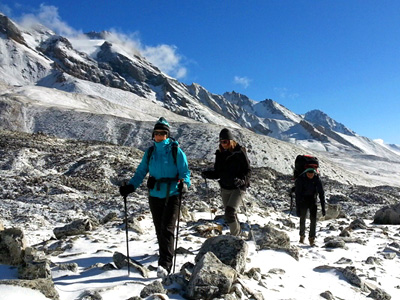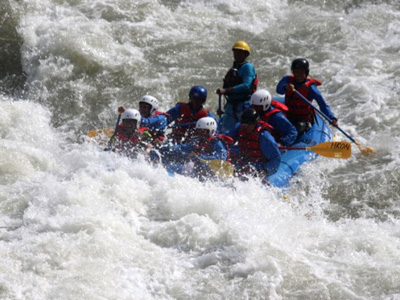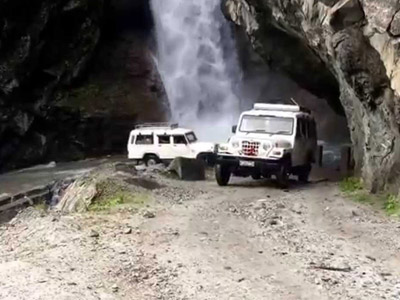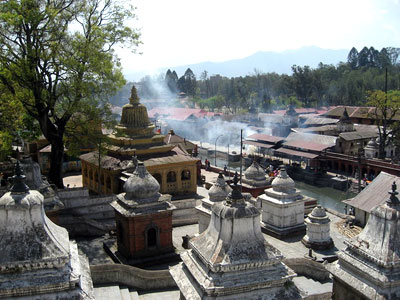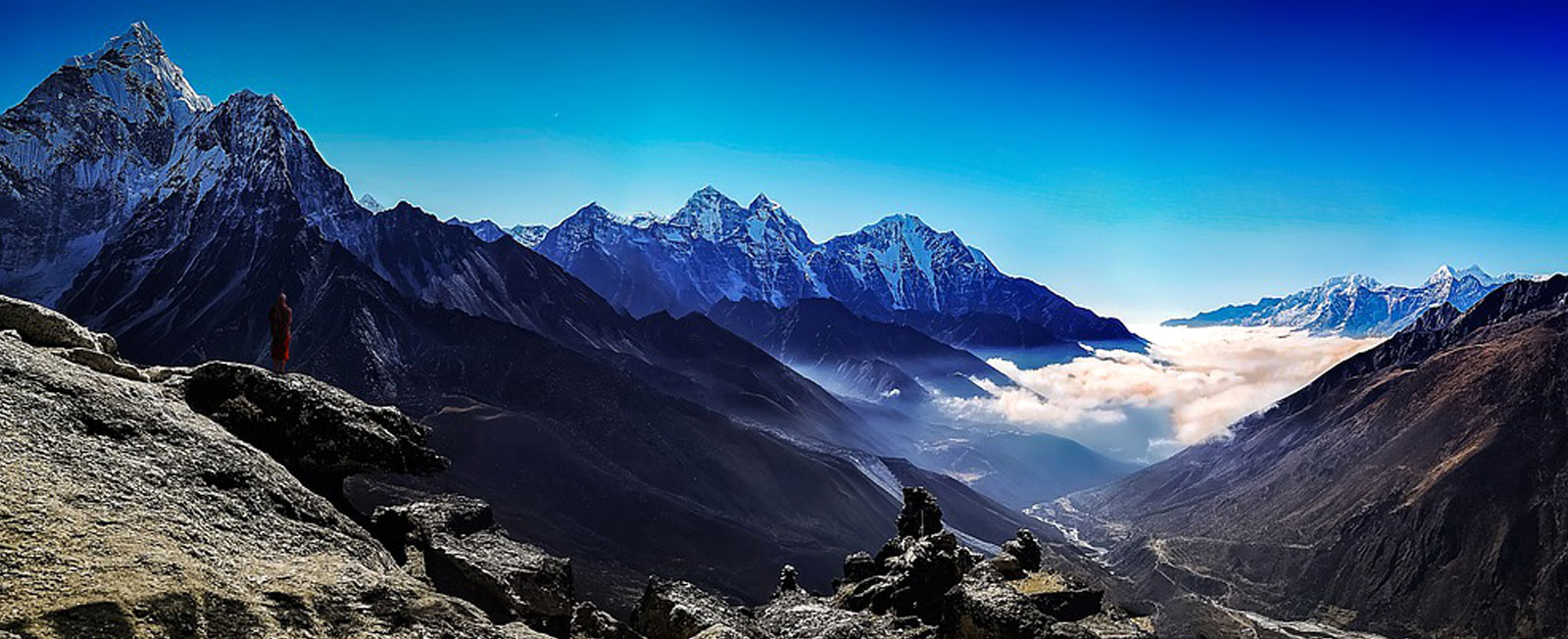
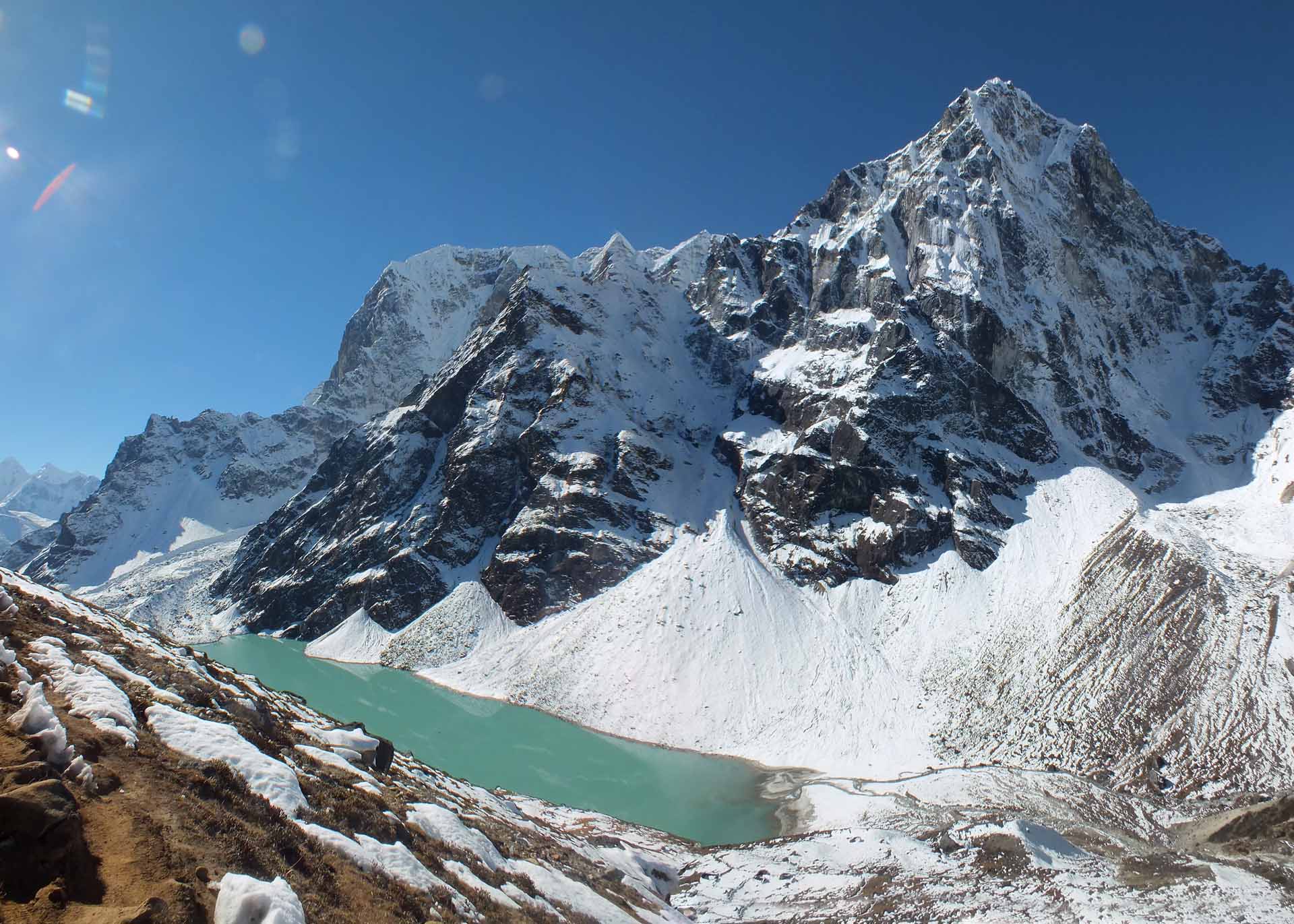
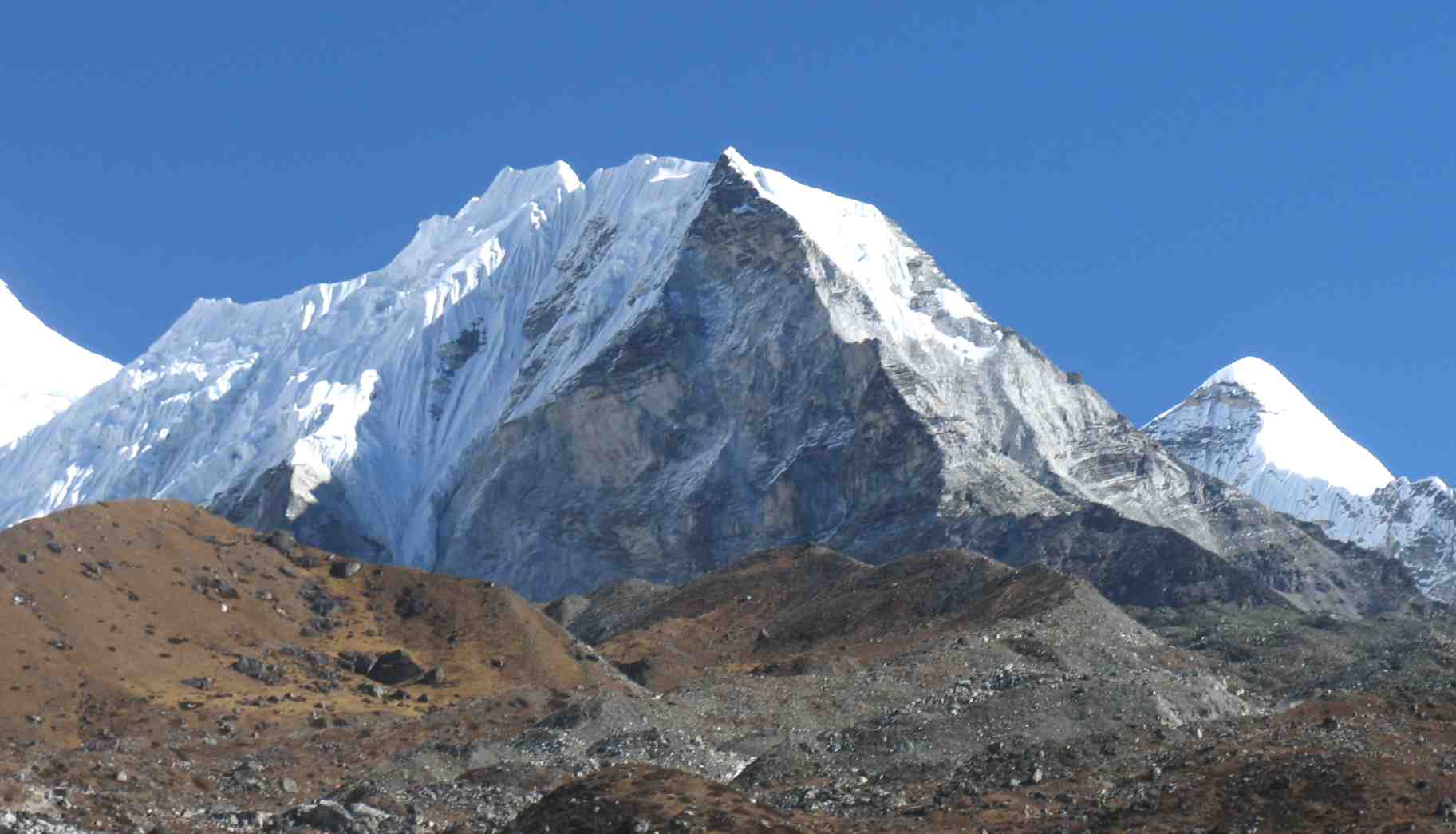
Everest Three Passes Trek
Duration: 19 Days Trip Difficulty: Strenuous
Trip Duration 19 Days
Destination Nepal
Group Size 2-12 People
Accomodation Hotel and Tea house
Altitude5545m
Highlights of Everest Three Passes Trek
- Mountain flight from Kathmandu to Lukla
- Exhilarating opportunity of crossing the three high passes in one trekking route and a life memorable experience while crossing the passes.
- Astonishing views of four highest peaks of the world.
- Everest Base Camp, Kala Patthar and Gokyo Lake.
- Tengboche Monastery.
- Thrilling view of Khumbu Glacier and Ice-fall.
- An insight on the Sherpa culture.
- Mountaineering to Gokyo Ri.
- Sagarmatha National Park listed in world heritage site.
- Fast flowing rivers originated from Himalayas making deep gorges.
- Fantastic opportunity to catch the entire nature gift in your camera.
Overview of Everest Three Passes Trek
Everest Three Passes Trek is one of the most thrilling adventurous treks of the Everest Region that comprises three high passes namely Kongma-La-Pass (5,535m), Chola-La-Pass (5,420m) and Renjo La Pass (5,338m) which is the latest discovery of great Sherpa and the feeling of crossing these passes is heavenly. Apart from the up-close views of everlasting snow capped Himalayas and the three passes; climbing of three great peaks Gokyo Ri (5,483m), Kalapatthar (5,545m) and Chhukung (5,550m) which are the highlights of the Everest Region trekking to the Everest Base Camp makes this trekking the most adventurous and enduring trek.
Everest three passes trekking route is designed to add the adventure and the excitement even more to the Everest Base Camp Trek with the natural grandeur of world’s high altitude palaces of magnificent views of soaring mountains on its glory while the high altitude settlements give you the authentic lifestyle of Himalayan people Sherpa. To complete this trek it takes 19 days or even more if you wish to take frequent rest with an average walking of 6-8 hours a day.
Everest Three Passes Trekking route begins with your arrival in Nepal and briefing you the trekking routes. Second day is the Kathmandu valley sightseeing. Kathmandu is known for its centuries old mix cultural heritage. Seven UNESCO heritage sites of the Kathmandu valley itself show the importance of this sightseeing.
The real adventure trekking starts from the third day with an awe-inspiring mountain flight from Kathmandu to Lukla being one of the shortest runways in the world and a short trek to Phakding. The next stop is the Namche Bazaar a known highest market place of the world or the capital of Sherpa community and the junction for trekkers of the Khumbu Region via Dudhkoshi valley. Then the route goes through Tengbuche, Dengbuche, chhukung, Lobuche to Gorak Shep. While stepping in up to Gorak Shep you will cross the first Kongma-La-Pass.
Stunning mountain views are obvious and an opportunity to saturate with the Sherpa culture that they have still conserved their rich traditions, values and beliefs in the modern era. The occurrences of the eye-catching views of towering mountains are more onward as you head ahead with the mesmerizing views of the Khumbu Glacier and Ice-fall at the Everest Base Camp and a 360-degree view of the mountains from the Kala Patthar including a superb view of the tallest peak of the world. The next excitement is waiting ahead, climbing Gokyo Ri peak would be one of the best moment of the trek as you can have the views of world tallest mountains. The trekking trails ends with passing through Renjo-La-Pass and Cho-La Pass back to Lukla and a short flight to Kathmandu.
The 19 days exploration begins from your arrival at Kathmandu and takes you to the base of the Everest and then through the high passes and great peaks with many extravagant views of the Himalayas including the 1st, 4th, 5th, 6th and 8th highest mountains of the world, some of the most daring trekking routes having an eye-catching natural sceneries, rarest animals, deep gorges, high hill terraces, rhododendron- bamboo- alpine forests, high altitude Himalayan lakes and colorful villages of Sherpa with distinct culture, tradition and beliefs that the every corner of the route is itself a package of surprises and at the end when you finish your trek, you are left with all the experiences worth sharing proudly that I was once there for the Everest Three High Passes Trek.
Health and Physical Requirements
Walking 19 days in hilly routes and in snow line area is certainly a difficult task which is suitable for the passionate trekkers. Prior trekking experience is certainly desirable but not compulsory. One who has excellent health, average physical fitness and is not suffering from ankle and knee problems and the heart and lungs problem with high motivation, self confidence, positive attitude and strong determination and able to walk 5-6 hours or even more in some cases carrying a light backpack can conquer the trek. Regular jogging and exercise 2-3 months prior to the trekking date would contribute you to accomplish the trek fruitfully.
Outline Itinerary
Day 1: Arrival day in Kathmandu (Altitude: 1,380m)
Day 2: Kathmandu Sightseeing and Preparation of Trek (Altitude: 1380m)
Day 3: Short Flight to Lukla and trek to Phakding (Altitude: 2,840m and 2,610 m)
Day 4: Trek from Phakding to Namche Bazaar (Altitude: 3,440m)
Day 5: Acclimatization in Namche Bazaar (Altitude: 3,440m)
Day 6: Namche Bazaar to Tengboche (Altitude: 3,860m)
Day 7: Trek from Tengboche to Dingboche (4,410m)
Day 8: Trek from Dingboche to Chhukung (Altitude: 4,730m)
Day 9: Acclimatization day at Chhukung (Altitude: 4,730m)
Day 10: Trek to Lobuche via Kongma La pass (Altitude: 4930 and 5,535m)
Day 11: Trek to Gorakshep to Everest Base Camp (Altitude: 5,140m and 5, 364m)
Day 12: Trek to Kalapatthar to Dzongla (Altitued: 5,550m, 4,830m)
Day 13: Trek from Dzongla to Cho La Pass (5,368m) to Gokyo (4,800m.) via Thagnak (4,700m.)
Day 14: Acclimatization day at Gokyo (4,800m) Climb Gokyo RI (5,400m)
Day 15: Trek from Gokyo to Renjo La Pass to Marlung (5,360m, 4,260m)
Day 16: Trek from Marlung to Namche Bazaar (3,440m)
Day 17: Trek from Namche Bazaar to Lukla (2,840m)
Day 18: Fly from Lukla to Kathmandu (1,400m)
Day 19: Departure from Kathmandu
Day 1: Arrival day in Kathmandu (Altitude: 1,380m)
Accommodation: Kathmandu 3 Star Hotel
Meals: Breakfast, Lunch and Dinner
Welcome to Nepal, a land of diversity in every aspects that an international tourist expects from his destination country. One of our officials greets you at the airport and transports you to the hotel. We will have a short introductory and trip briefing session at the evening.
Day 2: Kathmandu Sightseeing and Preparation of Trek (Altitude: 1380m)
Accommodation: Kathmandu 3 Star Hotel
Meals: Breakfast, Lunch, and Dinner
Kathmandu is the center of century’s old traditions, history and a mix culture of Hinduism and Buddhism. The seven UNESCO recognized heritage monuments (Hindu Temples of Pashupatinath and Changunaryan, Buddhist stupas of Bouddhanath and Swayambhunath, Durbur Squares of Kathmandu, Bhaktapur and Patan) of Kathmandu valley has always been the attraction for tourists since the beginning. The sacred Pashupatinath temple is the life time dream of every Hindu people around the world. The wood carving, sculptures, the living goddess are the main attraction of the day. We will provide you a guide to take you there to show you the morning of your treks that could help you to imagine your trekking day.
After you finish your day sightseeing, rest of the time you will prepare for your trip packing your equipments and amenities. You will have time to visit the Thamel Market well known among the tourists for last minute shopping of supplies.
Day 3: Short Flight to Lukla and trek to Phakding (Altitude: 2,840m and 2,610 m)
Accommodation: Teahouse
Meals: Breakfast, Lunch and Dinner
Walking Hours: 3-4 Hours
Generally, the flight to Lukla takes palace early in the morning. Due to the bad weather flights can be delayed. A short flight to Lukla normally takes half an hour with the scenic beauty as we head towards Lukla. It gives a feeling like Mountain flight. Your will have a thrilling experience when the plane lands on one of the shortest runways of the world. You will be received by our team members at the airport and a short trekking begins towards our overnight stay destination to Phakding via Dudhkoshi River and several Mani Walls and carved rocks with Buddhist prayers.
Day 4: Trek from Phakding to Namche Bazaar (Altitude: 3,440m)
Accommodation: Teahouse
Meals: Breakfast, Lunch and Dinner
Walking Hours: 5-6 Hours
The first half of the trek chases the northern trail gradually ascending up to the Dudhkoshi valley to Monjo crossing through series of suspension bridges and stepping in to the entrance of Sagarmatha National Park a world heritage site where our permits are checked and registered. It is home for some rarest animals like musk deer, snow leopard, Himalayan black bear and red panda. The park is also rich in vegetation forested with birch, juniper, blue pines, and bamboo and of course the beautiful national flower rhododendron. Then we will reach to Jorsale where we will take our lunch and end the day trek at Namche Bazaar known as the highest market place, the biggest Sherpa settlement and the gateway to Mt. Everest via crossing the longest bridge of the valley, deep and short Hillary Bridge walking on steep uphill climb. The hard effort comes to an end with mind-blowing first view of the glorious Mt. Everest.
Day 05: Acclimatization in Namche Bazaar (Altitude: 3,440m)
Accommodation: Teahouse
Meals: Breakfast, Lunch and Dinner
Walking Hours: 2-3 Hours
It is the acclimatization day with higher altitude as the elevation rises the air level becomes thin and it is compulsory to gain altitude slowly and steadily for our body to avoid any sickness due to high altitude though it doesn’t mean that we stay all the day at Namche Bazaar. We hike to a higher elevation walking around one to two hours to and come back to Namche Bazaar.
Day 6: Namche Bazaar to Tengboche (Altitude: 3,860m)
Accommodation: Teahouse
Meals: Breakfast, Lunch and Dinner
Walking Hours: 5-6 Hours
We will head towards the Tengboche after having breakfast. We will follow the oldest trading route of Tibet, Nepal and India and reach Thame a Sherpa village. The route ahead goes through the ridge of hillside with magnificent sights of Ama Dablam, Kusum Kangaru and Thamserku on the right far of the valley. The place is also proudly identified as the birthplace of the first Everest climber Tenzing Norgey Sherpa with Sir Edmund Hillary and the 21 times Everest climber Apa Sherpa. The shrineTengboche Monastery is the biggest one of the Khumbu region where you can experience the Buddhist monks humming of sacred religious mantras. The eye catching view of the great marvelous Ama Dablam Himalaya on the background of the monastery looks outstanding.
Day 7: Trek from Tengboche to Dingboche (4,410m), 5- 6 hours trek
Accommodation: Teahouse
Meals: Breakfast, Lunch and Dinner
Walking Hours: 5-6 Hours
Enjoy the view of the Mt. Ama Dablam having breakfast which is even more charming in the morning with the rising sunlight and recommence the journey. The trek go on through the flourishing rhododendron, confers and brich forest to Debuche crossing chains of suspension bridges. We then ascend further with the views of the Everest, Lhotse and Ama Dablam, the most beautiful mountain of Khumbu Region that keeps us encouraging our trekking efforts to Pangboche. Soon after crossing the typical Sherpa villages Pangboche and Shomare, the trail goes through the Imja valley and Lobuche River climbing up to Dingboche village, the overnight stay location.
Day 08: Trek from Dingboche to Chhukung (Altitude: 4,730m)
Accommodation: Teahouse
Meals: Breakfast, Lunch and Dinner
Walking Hours: 3-4 Hours
After having breakfast, we start our journey to Chhukung. The trekking trails is pleasant through the stone walled fields and alpine landscape to the Imja Khola valley entering into the center of towering mountains, Lhotse on the left and Ama Dablam on our right. After around an hour walk, we reach in Bibre which is known as Yak herdsman place. We continue our trek having the views of Imja Tse peak that has marvelous pyramidal shape and reach Chhukung which is a super place to explore the glacier and fantabulous views of snowcapped mountains all around.
Day 9: Acclimatization day at Chhukung (Altitude: 4,730m)
Accommodation: Teahouse
Meals: Breakfast, Lunch and Dinner
Walking Hours: 3-4 Hours
The second rest day of the trek is inevitable to adjust our body with the high altitude before setting off for the first high pass Kongma-La-Pass but we keep our body active doing some excellent hiking to Chhukung and Island peak. The views from these two places are tremendous. This trekking trail takes us to the Lhotse glacier; Imja Lake and the eastern face of Ama Dablam are just super and unusual.
Day 10: Trek to Lobuche via Kongma La pass (Altitude: 4930 and 5,535m)
Accommodation: Teahouse
Meals: Breakfast, Lunch and Dinner
Walking Hours: 6-7 hours
The trek begins early in the morning as today is the day to cross one of the three high passes with plenty of preparation including water and food stuffs as there are no lodges on the way. There are two routes to reach Kongma-La-Pass, one is through the northwest of Chhukung passing Nuptse glacier moraines or might walk back to the valley to Bibre and follow the above the Niyang Khola to the high pass. We have a great view of Island peak and rough ridge of Amphu Lapcha; while ascending ahead we will cross a wide basin where you can see the small frozen lakes. At the top of the Kongma-La-Pass, we see cairns wrapped in prayer flags- a mark of the pass. The descending route then is tough that follows the Khumbu glacier and takes us to Lobuche the final destination of the day from where we can enjoy the spectacular views of Mt. Pumori and Nuptse.
Day 11: Trek to Gorakshep to Everest Base Camp (Altitude: 5,140m and 5, 364m)
Accommodation: Teahouse
Meals: Breakfast, Lunch and Dinner
Walking Hours: 7-9 Hours
After taking our breakfast early in the morning, we head towards Gorak Shep and then to Everest Base Camp. The route follows rocky terrain alongside the Khumbu glacier with the marvelous views of Everest, Pumori, Mahalangur, Lingtern, Khumbutse, Nuptse among others. Further ascending, we reach at Thangma Riju from where the panoramic views of the splendid Himalayas can be seen. As we reach Gorak Shep, we take a short break amidst the towering mountains. Then we head towards the Everest Base Camp where you can see colorful camp sites of summit climbers preparing for conquering the world’s highest mountain. If you are lucky enough, you will get the opportunity of live ice-fall of Khumbu glacier. The feeling of being at the world’s highest mountain base is heavenly and the up close views of Nuptse, Khubuste and Pumori saturate you divinely. The day ends with trek back to Gorak Shep and take rest.
Day 12: Trek to Kalapatthar to Dzongla (Altitued: 5,550m, 4,830m)
Accommodation: Teahouse
Meals: Breakfast, Lunch and Dinner
Walking Hours: 7-8 Hours
As a matter of fact, the up close view of The Mt. Everest is not possible from the base camp; we head towards the peak of the Kalapatthar which is the best view point of the Khumbu Region, very early in the morning for the up close views of many towering mountains on the sunrise including the Everest. The route is steep up hill climbing and should well prepared for the high altitude and shivering cold. Upon the arrival at the peak of Kalapatthar, the unbelievable views of the glowing summits of the mountains with the first sunlight of the day that spreads all the sides round` gratify and multiply your expectation more than what you have expected. The gorgeous Himalayas: Mt. Everest, Mt. Nuptse, Mt. Lhostse, Mt.Pumori, Mt. Ama Dablam and many other towering mountain peaks gratitude such a way that you will never be again. After the mesmerizing glorious 360-degree view of towering mountains, we will head back to Gorak Shep and then to Lobuche. The trail then slightly ascends and then descends steeply down for about an hour to reach Dzongla at the base of Cho-La-Pass. While following the route to Dzongla we cross through the grassy ridge having the view of soaring peaks of Ama Dablam and Kangteg-Thamserku and Tawache with a view of Pheriche village at the valley floor and the company of the Cho La Lake just below the Mt. Cholatse.
Day 13: Trek from Dzongla to Cho La Pass (5,368m) to Gokyo (4,800m.) via Thagnak (4,700m.)
Accommodation: Teahouse
Meals: Breakfast, Lunch and Dinner
Walking Hours: 7-8 Hours
As we are ready for the journey to Gokyo, we are saluted by the splendid view of Mt. Cholatse. Today is going to be one of the hardest treks as the route is inclined steep up climb and worse by the boulders that we have to climb in some places and could be even worst by the thin ice layers on it hence alertness is needed carefully stepping up. Climbing up and achieving the higher altitude, the views become more captivating as the holy Chola Lake begins in to sight and on the other hand the pyramidal view of the Mt. Ama Dablam is just amazaing with the musical sound of nearby fast flowing streams that are covered with ice at many places. Upon arrival at the top of the Cho La Pass, we see cairns wrapped in prayer flags and the magnificent views of the soaring peaks all the directions round is breathtaking. Descending down to the Thangnak village could be easier but carefulness is required. Thangnak is a small Sherpa settlement. The route then brings us to the longest glacier of Nepal, Ngozumpa glacier and the other side of the glacier; we get the view of second Gokyo Lake out of the series of six. A short distance ahead is the third and the Gokyo village is situated on edge of the lake where we stay overnight.
Day 14: Acclimatization day at Gokyo (4,800m) Climb Gokyo RI (5,400m)
Accommodation: Teahouse
Meals: Breakfast, Lunch and Dinner
Walking Hours: 3-4 Hours
Today is the third acclimatization day at Gokyo to avoid any kind of sickness due to the high altitude. Though, we continue our mission to explore the Gokyo area and climb the Gokyo Ri peak. Climbing to the peak takes around 2 hours. The views form the peaks are tremendous. You can see a panoramic view of many towering mountains including the Everest, Makalu, Cho-Oyu, Gyachung Kang, Lhotse, Nuptse, Cholatse, Tawache and numerous others. After this astonishing visit, those having willingness can make their way out to fourth Gokyo Lake (Thonak Tsho) and fifth lake (Ngozuma Tsho). The similar views can be accomplished from the Scounderl’s Viewpoint located at the edge of fifth lake.
Day 15: Trek from Gokyo to Renjo La Pass to Marlung (5,360m, 4,260m)
Accommodation: Teahouse
Meals: Breakfast, Lunch and Dinner
Walking Hours: 7-8 Hours
The journey begins early in the morning and the trail goes alongside the Dudh Pokhari Lake leaving the main trail and the ridge of Gokyo Ri. After walking around three hours with the view of Rolwaling Ranges we reach Renjo-La-Pass where the eye-catching views are awaited. The views from the edge of the Renjo-La-Pass are similar with that of the Gokyo Ri Peak along with the third Gokyo Lake and Gokyo village underneath the Ngozumpa Glacier. The trekking route then descends down with the stone staircase that could be dangerous because of the presence of thin ice layers making the staircase slippery. Precaution is necessary. The route then follows the south bank of the Angladumba Tsho Lake along with the Relama Tsho and Renjo Lake. Then the route follows to Lumbe and then to Marlung for the overnight stay.
Day 16: Trek from Marlung to Namche Bazaar (3,440m), 5-6 hours trek
Accommodation: Teahouse
Meals: Breakfast, Lunch and Dinner
Walking Hours: 5-6 Hours
The expedition begins early in the morning after having the breakfast following the centuries old trade route among Tibet-Nepal-India. The route descends down to Bhotekoshi River and further descends to Taranga. The trail further descends crossing via two bridges, lush green trail and the Langmuche Khola originated due to the explosion of the bank of glacial Lake Dig Tsho in 1985 causing heavy flood along the Dudhkoshi Valley. Thame has a famous Gompa with three big images of Buddha, Guru Rimpoche and Chenresig (Avalokiteswara) and the famous colorful Rimdu festival is celebrated in May. The trail further steeply descends down to Samde and then to Thamo. Soon after Thamo we cross a check point and world’s highest hydropower station that mainly supplies the electricity to most parts of upper Khumbu. The Laudeo monastery of Phute run by the Kathmandu Bouddhanath is well known among the tourists as the meditation and Buddhist study center. Finally we reach at Namche Bazaar passing through some Gompas, Mani walls and prayers flags.
Day 17: Trek from Namche Bazaar to Lukla (2,840m), 6-7 hours trek
Accommodation: Teahouse
Meals: Breakfast, Lunch and Dinner
Walking Hours: 6-7 Hours
Today’s descending is quite easy crossing over the several suspension bridges on the Dudhkoshi River and its branches to the national park for the exit check point waving hands to Namche and the backward Himalayas of the Khumbu. The trail further extends walking on easy trail and plains through rhododendron and pine forests with a distant view of the Himalayas. Crossing through several Sherpa villages throwing a glimpse on their living style, belief on Buddhism, culture, traditions and including the mantra carved stones and flags. Finally, we reach at Lukla and enjoy the last night amidst the world’s several highest peaks.
Day 18: Fly from Lukla to Kathmandu (1,400m)
Accommodation: Three Star Hotel at Kathmandu
Meals: Breakfast, Lunch and Dinner
Generally, the flight takes place early in the morning so as to avoid any weather disturbance. Once again an exciting experience as the plane takes off on the shortest runway. We will see the gorgeous Himalayas far in the horizon for the last time and arrived at Kathmandu. Soon after arrival, you will be transferred to a hotel. There will be gathering at the evening for the valuable trekking feedback from your side and will organize a farewell dinner to celebrate the successful achievement of your fine journey.
Day 19: Departure from Kathmandu
If you have time and wish to do other adventurous journey like hiking, Climbing, Paragliding, Bungee Jumping, Rafting or any other activities, you can consult to us and we are quite happy to serve you again and if you are going back to home just after this adventurous trek then we advise you to do your shopping for the future memory and gifts to your beloved. We will drop you at the airport and wish for your safe and happy journey to your homeland and wish to see you again.
Cost Includes
- Airport pick up and drop off service
- Kathmandu – Lukla – Kathmandu flight fare
- Full Board Plan (breakfast, lunch, dinner, accommodation, tea or coffee) during trek,
- Hotel in Kathmandu with BB plan
- Trekking guide and porters(one guide for a group and 1 porter for each two)
- Sagarmatha National Park entry permit
- TIMS (Trekkers’ Information Management Systems)
- All government taxes
- Food, accommodation, insurance, salary for the trekking guide /porters
Cost Excludes
- Lunch and dinner in Kathmandu and Pokhara
- Your travel insurance
- International flight and departure tax
- Any expense of personal nature
- Nepal entry visa fee US 30 (Duration 60 days from date of issue)
- Your personal nature expenses such as bar bill, laundry, beverages
Reviews on Everest Three Passes Trek
Submit your review | |
1 2 3 4 5 | |
Submit Cancel | |
Interested in this package? Make free inquiry
Reviews on Everest Three Passes Trek
Submit your review | |
1 2 3 4 5 | |
Submit Cancel | |
More Related Packages
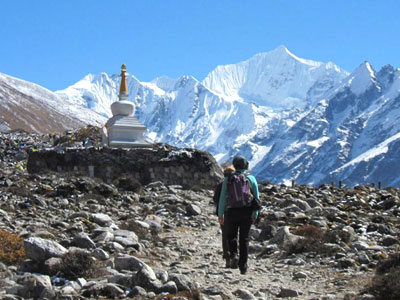
Langtang Valley Trekking
Duration: 10 Days
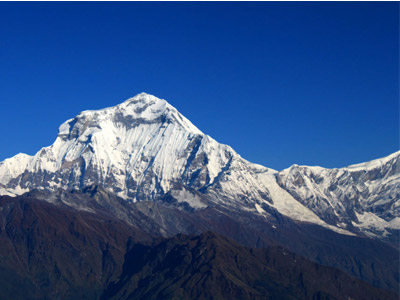
Dhaulagiri Circuit Trek
Duration: 20 Days
15% Off
US$ 1750
